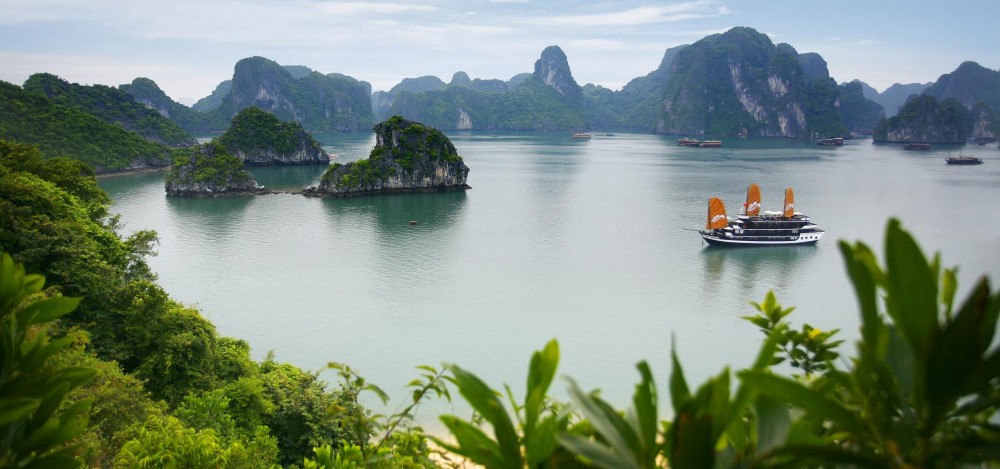Walking through the ‘secret cave’ in Halong Bay was a simultaneously breathtaking and somber experience. Breathtaking from its sheer expanses made somber by its transformation into a highly commercialized, unsustainable industry. It is an unsettling paradox: the very process that brought me to experience this spectacular place, the industry that has made this otherwise inaccessible place available to so many people, is at the very least diminishing its majestic qualities and at worst contributing to its ultimate destruction. This reality was inescapable to me: the warnings by the tour directors of “strenuous activity” as they stuffed fat, over-eager tourists with food every two hours, the stairs with lights guiding the path throughout the cave, and the snack and merchandise tents around every corner in the cave and on the water in little boats. Not to mention the evidence imprinted on the cave itself of this enterprise including the scattering of cigarette butts at the entrance, the graffiti decorating the cave walls, and the price stickers that littered the mountainside below the vendors.
On one hand, it is laudable how refined and professional the experience seemed. The overnight trip was well-coordinated, organized, and a fun, awe-inspiring experience. I was struck by how similar this was to the apparent resources made available to the other museums we visited – in Saigon the War Remnants Museum, the Cu Chi Tunnels, the Reunification Palace; in Hanoi the Hoa Lo Prison and the Ho Chi Minh Mausoleum and Museum. All demonstrated a conscious, deliberate attention to professionalism through signage and pamphlets through exhibits and captions or translations of texts. The structure of the museums and their overall appearance generally also reflected this attention to presentation and the impression that lots of time, money, and effort had been spent to construct these national attractions.
However, particularly at the Cu Chi Tunnels and Halong Bay I was unable to shake two disconcerting thoughts: 1) the flagrant and somewhat distracting effort to cater to tourists and 2) the apparent overlooking of the harm to the environment. Distracting when during breaks from the shuffling between hourly activities we would be approached either by snack boats selling crackers and soft drinks or alternatively by the ship’s captain inquiring about the quality of the stay. Harm to the environment through both pollution associated with industrialization and also the harm of human foot traffic. The physical environment of the cave is not designed to support thousands of tourists annually; I was unimpressed by the efforts (or lack thereof) to maintain the integrity of the cave itself. It makes me uncomfortable to imagine what the cave first looked like upon its discovery, before it became widely accessible to the public, and what it will look like in another twenty years. This raises the question of priorities: immediate profits through heavy tourism or long-term sustainability in order to enjoy the benefits of tourism for a long time to come? How can these two ideas be married to provide high profits and allow many people to experience the region’s natural beauty in an ecologically sustainable way?
